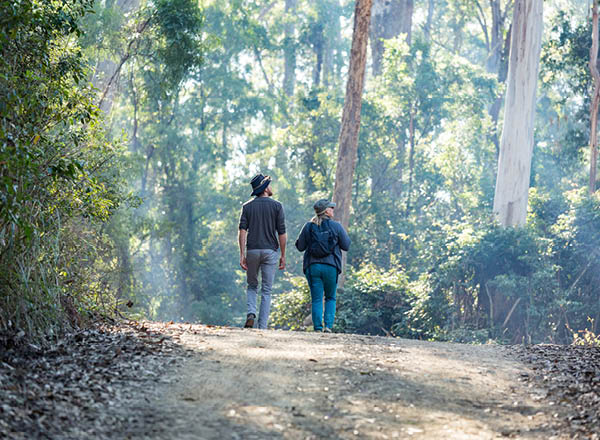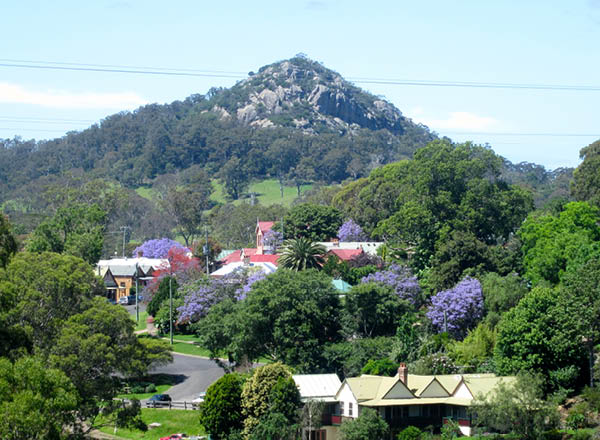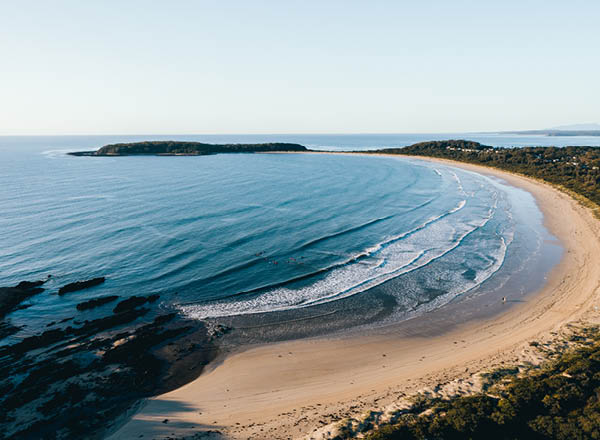Laced with trails showcasing the rich natural and cultural heritage of the NSW Far South Coast, the Eurobodalla region is a hiker’s paradise. Whether you’re looking for a challenging independent trek or a guided casual stroll, there’s a walk to suit every type of visitor. Here’s a taster of the top options for exploring Eurobodalla on your own two feet.

Best for a mountain climb: Gulaga summit
Rising up behind the lush rolling hills of the Tilba area, Gulaga (formerly Mount Dromedary) has deep spiritual significance to the Aboriginal Yuin people, to whom the dramatic mountain signifies a mother figure. Forged by gold miners in 1884, the steep but scenic track to its summit can be hiked independently (allow four to five hours for the return slog) but is arguably best experienced as part of the 40-hour Gulaga Creation Tour run by local Aboriginal-owned organisation Ngaran Ngaran Cultural Awareness, which combines the hike with a fascinating insight into the sacred Dreaming of creation that Gulaga holds.
If you’re hiking independently, park your car near excellent French-inspired café La Galette in Central Tilba and follow the Mount Dromedary Trail, which gently guides you through deep green rainforest and past magnificent granite tors en route to Gulaga’s summit.

Best for Aboriginal culture: Bingi Dreaming track
Dreaming tracks or Song Lines link places traditionally visited by Aboriginal people, from ceremonial sites to hunting grounds, campsites to water sources. In Eurobodalla, you can walk in the footsteps of the Brinja-Yuin people on the Bingi Dreaming track, a 13.5km coastal trail that traces an ancient Song Line stretching from Congo in the north to Tuross Head in the south. Just like the Gulaga summit, visitors are welcome to tackle the route independently (allow four to six hours one-way), but those seeking a more immersive experience would be wise to book a tour with Minga Aboriginal Cultural Services.
During the two-hour excursion, which visits a section of the track, an Aboriginal guide will explain its Song Lines, share traditional wisdom such as medicinal uses for local native plants, and point out Aboriginal heritage sites such as shell middens.
If you’re tackling the entire trail, keep your eyes peeled for its prolific birdlife, as well as kangaroos and wallabies relaxing in the sun. Several vantage points along the way offer superb whale-watching opportunities, particularly from September to November. There are also lots of places to cool off, so don’t forget to pack your swimwear along with plenty of drinking water.

Best for local history: Tilba Talks Heritage Walks
Delve deeper into the fascinating history and natural wonder of the Tilba region by signing up for a guided walk around the heritage village of Central Tilba with Zoe Burke of Tilba Talks Heritage Walks. From the cultural and geological significance of the landscape to tales about the Tilba’s founding families and stories from the goldrush era, you can expect to enjoy rare insights into Australia’s first National Trust Village during your guided stroll around the picturesque town, with tours tailored to your particular areas of interest and fitness requirements.
Best for a garden stroll: Botanic Garden tracks
Over 8km of tracks have been developed within the beautifully maintained Eurobodalla Regional Botanic Garden near Batemans Bay. Pick up a map from the gardens’ visitors centre and choose your favourite trail, from the 1km Limited Mobility Track that provides access to attractions including the bird hide, sensory garden, the rainforest garden and the sandstone garden, to the more challenging 2km Hill Track that weaves through dry native forest, with patient visitors sometimes rewarded by cameos from resident swamp wallabies, echidnas, long-nosed bandicoots and lyrebirds.
Best for adventure: Big Hole walking track
Thought to be around 400 million years in the making, the extraordinary natural marvel known as the Big Hole is in fact a roofless limestone cave dropping more than 100m into the earth. The unusual chasm, which is around 50m wide, can be reached by walking from Berlang campground in Deua National Park, wading across Shoalhaven River, then continuing through dry eucalypt forest and unique nana heath. It’s a 3.5km return hike to the Big Hole lookout, and if you’re there in the early morning or late afternoon, look out for the resident lyrebird. For a more challenging hike, carry on to Marble Arch or return to Shoalhaven River for a refreshing swim.
If you’d rather explore Deua National Park with a guide, contact passionate local guide and conservationist Paul Dickson of Nature Engagement Tours, who also operates in Murramarang National Park.

Best for seaside photography: Broulee Island Nature Reserve Walk
Joined to the mainland by a permanent sandbar at the southern end of Broulee Beach, Broulee Island is ringed by a scenic 4km walking trail. Park near the Broulee Surfers Surf Life Saving Club and head north around the rocks to Shark Bay, where a short beach track leads to the ‘island’. Kids will love looking for sea critters in the many rock pools along the circuit, with the vistas across the pools also offering superb photo opportunities. The walk, which takes around two hours, is also known for its birdlife, including the superb fairy wren (look out for the brightly-coloured males) and majestic white-bellied sea eagles.
